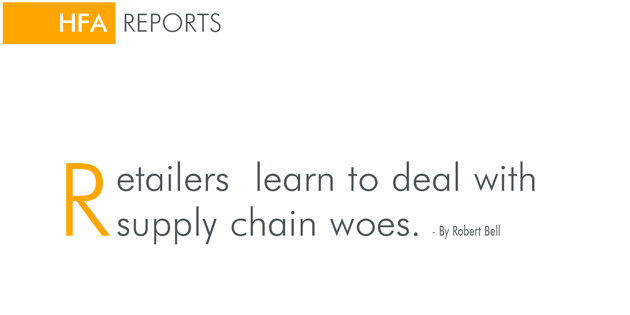
Content about HFA member-retailers contributed by HFA.
PerLora
When HFA member Lora Sigesmund was asked how the woeful performance of furniture supply chains was affecting her business, Sigesmund didn’t have to dip far back into her memory for an example.

HFA member Lora Sigesmund of PerLora, a contemporary furniture
store in Pittsburgh, says manufacturers need to offer realistic delivery dates so
retailers don’t disappoint customers.
|
“I just lost a $7,000 sale this morning,” said Sigesmund, who with her husband Perry, owns PerLora, a contemporary furniture store in the heart of Pittsburgh. “I wish I could say it was rare, but it’s happening more than we want to think about.”
PerLora lost the sale after a comedy of supply chain errors—none made by PerLora. First the furniture arrived weeks late—and damaged. When a replacement piece was ordered but could not be delivered to the store by the date promised, the customer who had been waiting for months walked away from the sale. “It’s frustrating on my end, but I understand it’s probably even more frustrating from [the customer’s] perspective.”
From a business sense, the pandemic has been a double whammy for furniture retailers. First, it forced them to close their doors—up to three months for many. In that time many Chinese manufacturers shut down or moved to neighboring countries like Vietnam and Malaysia. The second hit came after the stores reopened. With an unprecedented demand for furniture, those manufacturers are struggling to keep up. Retailers are feeling the pain, trying to soothe customers with well-intentioned promises or discounts.
“We’re trying to be as open and transparent with our customers as possible, but to do that we need for [manufacturers] to be just as transparent with us and we’re not always seeing that,” said Sigesmund.
Beck's Furniture
HFA member Beck's Furniture wasn’t hit as hard early in the pandemic. The store in Bonners Ferry, Idaho, closed for only a week last spring so there wasn’t much of a pent-up demand when it reopened.
Nevertheless, business has been booming. A wave of permanent transplants from California and Oregon has flooded Bonners Ferry —just 20 miles from the Canadian border. They’re looking for furniture to fill their new homes. “We’ve gone through two years of inventory in the past six months,” says Rob Beck. “If we had furniture, we’d sell it, but we can’t get our hands on it.”
During a recent HFA Live webinar, which can be found at go.myhfa.org/supplyfw, a pair of supply and logistics experts told viewers the current supply chain delays won’t improve for another six to seven months. But in the same breath, Riaz Husein and Garrett Bowman offered five strategies retailers can enact now to help with those delays and unknowns to come:
-
Be prepared by proactively planning, while staying agile.

HFA member Rob Beck says his store in Bonners Ferry, Idaho, has sold two years of inventory in the past six months. Beck says he could sell more with a reliable supply chain.
|
-
Expand all of your available products and supplier options. "Most retailers go narrow and deep when it comes to product," said Husein. "Think about going wider and shallow to give you more options on product you can get in your store."
-
Solidify your vendor relationships to improve your supply priority. Husein and Bowman said it's largely a myth that giants like Amazon and Wayfair get preferential treatment for delivery over smaller retailers. "But you should be having more conversations with your vendors right now, communicating with them anyway," said Bowman.
-
Resell returned or damaged products. Instead of writing it off or returning it to the manufacturer, find a buyer. Given the current demand for furniture, there's a buyer out there for that scratched desk.
-
Manage communication and expectations with customers. It's the same retail practice of under promise and over deliver. "If you tell them three months and you deliver in two weeks, they are thrilled," said Husein. On the other hand, if you tell them a certain date and keep having to call the customer back with bad news, you might have to offer them money back. And your reputation takes a ding.
Sigesmund said manufacturers need to be up front with retailers when promising lead times for orders. In the meantime, Sigesmund suggests retailers stick with the tried-and-true chestnut of under promising and over-delivering to customers. “If a manufacturer tells you 14 weeks, tell your customer 16,” she said. “That way you build in a little room. If it comes in on time, you look like a hero to your customers.”
For more information on HFA visit https://myhfa.org/.
A feature about Home Furnishings Association's retail members, legislation affecting the furniture industry and other retail news from HFA.